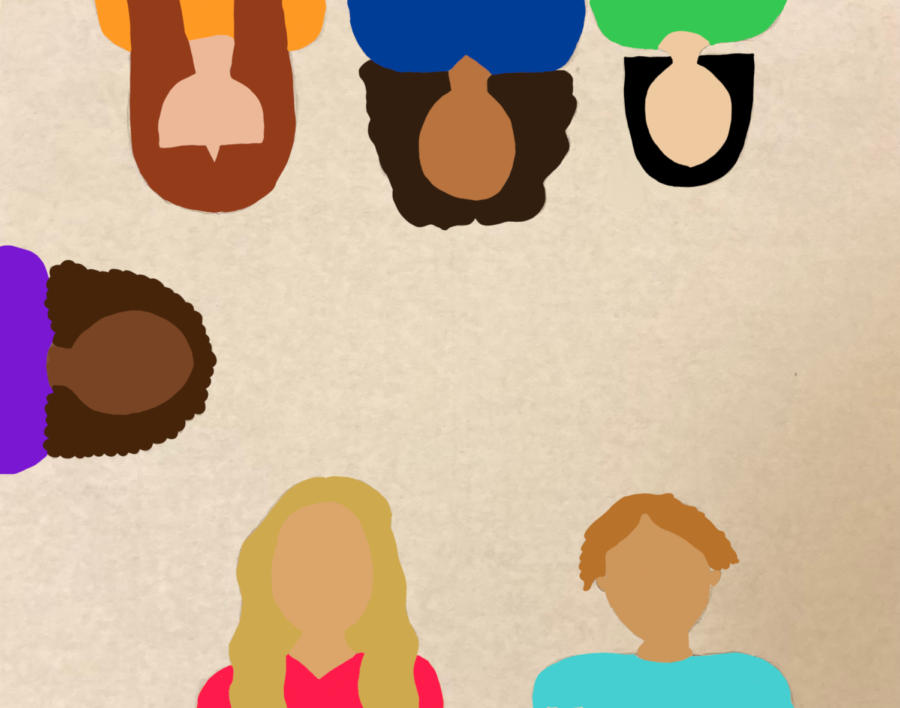Opinion | Safety isn’t black and white: a look into the intersectionality of discipline
December 16, 2022
What does safety mean to you? Do you picture men in blue with loaded guns trained to serve and protect? Is it a school surrounded by buzzing metal detectors that you have to walk through before first period? If some of these examples made you feel the opposite of secure—if they gave you sweaty plans or a lump in your throat—it could be because these situations have been enforced to elicit fear and anxiety. Safety is a polarizing concept for many because historically, certain people’s safety has been put in jeopardy for others. So let’s dive into the history of this word that is controversial and incredibly crucial in order to achieve equity.
When looking at how some feel safe in another person’s dangerous situation, we must acknowledge that often safety is an illusion. It’s ironic that there’s this idea that metal detectors will keep your child safe from all harm, yet male Black students are more likely to be targeted in the process. Or that gender neutral bathrooms are inappropriate or uncomfortable when transgender and non-binary students can feel completely out of place without one. Safety officers and SROs may help many ETHS parents sleep at night, but we need to examine how they do not punish equally. Senior Phoenix Anderson speaks about how she is treated differently as a Black woman by safety officers.
“I think that safety officers are taught that targeting Black students is ok… and it almost seems like the goal.”
No students should ever have to feel like a criminal when all they are trying to do is get an education. Schools are not only for learning, but for growing up, and they need to be a place where all students feel security.
“It’s hard seeing people that look like us, target us, even if the rules come from above,” Anderson says.
The real root of the problem doesn’t start or end with safety officers, but rather with ETHS administrators who foster this hostile environment. Now that we have had a look at safety at ETHS let’s take a little history lesson.
Safety is a word derived from Old French and Latin meaning being secure or unharmed. In medieval England, there was this idea of the “dangerous women.” When women are seen with emotions, especially ones that go against the status quo, it is often considered a threat. Historically, we can see men in power weaponizing women’s emotions against them by calling them crazy and irrational. This has led to unethical psychological treatments, including lobotomies and even murder during historical periods such as the Salem Witch Trails. In these trails women were brutally murdered because of the misconception that psychosis or any mental illness was a sign of being posesed by the devil. Women having human emotions literally landed them dead. On the other hand, when men have stood up against unfair governmental policies or acted with intensity, it has been viewed as healthy or even necessary. Women standing up for suffrage, bodily autonomy and equality threatens authority and is seen as dangerous. Thus, when thinking about safety, we must recognize that marginalized groups have to upset their oppressors in order to gain a sense of security or equality.
Another facet of safety is the need to control. In order for white slave owners to have felt protected on their plantations, they had overseers and slave patrol to carefully survail the enslaved people. Modern day police evolved from slave patrol in fact, which was made to prevent any slave uprisings or escapes. This idea of police keeping us safe is a very white-centric view. Again, when marginalized people threaten the white-cis-hetero patriarchy, it is an inherent threat. The over policing of Black people is truly to make white people feel safer. This illusion of safety leaves millions of people wrongfully incarcerated every year. This false notion of security makes it so when a white person calls the police on a Black person the police officer is already looking for a problem, rather than a solution when they arrive at the scene. This follows us to places of education, even at a liberal and seemingly diverse place like ETHS, where the administration disproportionately criminalizes Black and brown youth.
We can see examples of threatening the norm very clearly with the pride movement. The word “Queer”, while reclaimed, has it’s origins in hatefully labelling gay people as “odd” or “abnormal.” But beyond being ostracized for their sexuality or gender identity, LGBTQ+ were seen as a danger. Straight people had some misguided notion that gay people want to force all children to follow in their foot steps and labeled them as perverts. We see this happening today, as many right-wing politicians and Queer people simple existing threatens many people. Queer joy, similar to Black joy, is an act of resistance in such a bigoted world. While being seen as a threat to children, gay people were being killed by the goverment’s lack of HIV/AID’s prevention and care and have a insaley high suicide rate among youths. Even now with intense transphobia surrounding bathrooms and changing rooms at school, it is hard for trans students to feel a sense of safety. The first step to making people feel safe is to affirm who they are by creating welcoming and inclusive spaces inside the school.
After reading this, I want you to ask yourself one thing. Do my feelings of safety or security put others in danger? It’s hard to look beyond ourselves because biologically, we all put our own safety first. But thinking about how to make your peers feel security, acceptance, and understanding is vital for progress. Everyone should be able to walk down H-Hall without worrying about being unjustly targeted or to feel comfortable using the bathroom during school. ETHS has made efforts to improve student safety, but there is still a long way to go. Let’s work together to foster an inclusive, secure, and understanding school environment.









